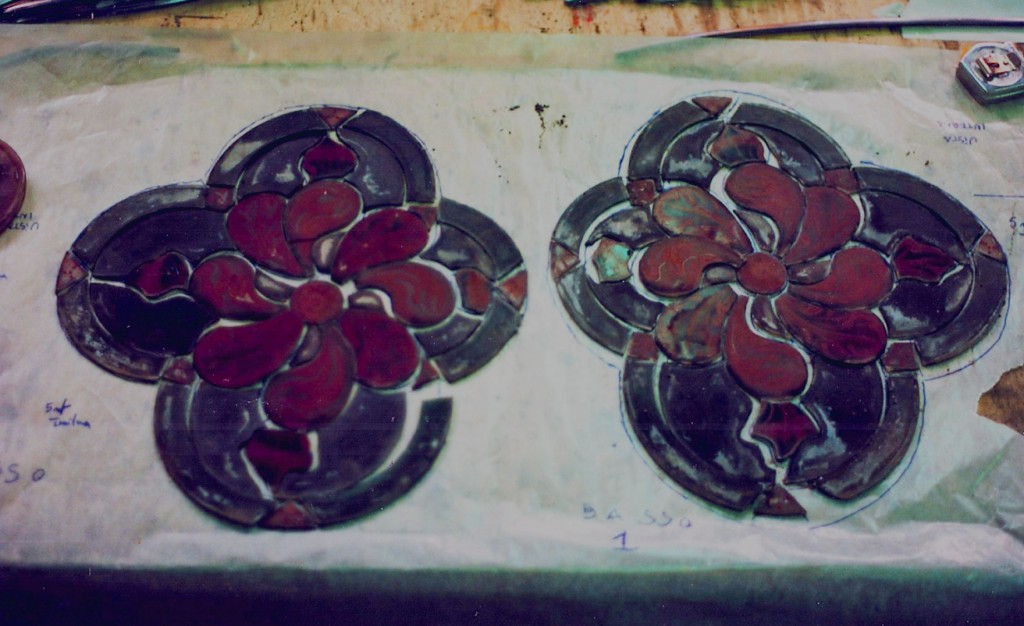Restoration
he ancient technique to manufacture stained glass has remained unchanged until 13th century, and it is nowadays known thanks to Benedictine Monk Theophilus, who described this technique in the Diversarum artium schedula. In his work, Theophilus also describes how to restore damaged stained glass, and glass manufacture in general, including came and iron supports.
During the centuries, diagnostic and restoration methods have changed, but it is necessary that each restoration considers the realization period of the artwork, its materials, and operating procedures, to keep unchanged the historical evidence of the artwork to restore.
The restoration of an ancient or modern stained glass can be necessary for several reasons: the replacement of broken or time damaged glasses, the removal of previous restorations or old protective varnishes, the remake or strengthening of the lead or iron parts, the restoration of the painting.
The first step is the photographic research and accurate inspection of the stained glass to restore, of its load-bearing structure, of the stone materials included, and the “historical reading” of the context. The panels that compose stained glasses, especially the ancient ones, are fragile, mainly bent, without an independent framing structure. Thus the panels are carefully disassembled, and transferred to our laboratory.
The second step is the accurate inspection of each single part of the panel of the stained glass (glasses and leads), followed by the cleaning of the glass tiles and of the paintings, the realization of the missing glass parts, the gluing of the glass chips, the removal of potential “doublings”, the adjustments of the paintings, the restoration of the leaded weaving, and the grouting of the glass-lead gaps.
The third step is the arrangement of the stained glass on framing structures, and the set up of the panels in their original locations.
Each phase is very delicate and demanding, and it requires great skillfulness and craftsmanship, as well as passion and deep technical and historical knowledge, to restore the artwork to its original beauty of brightness and splendour.




